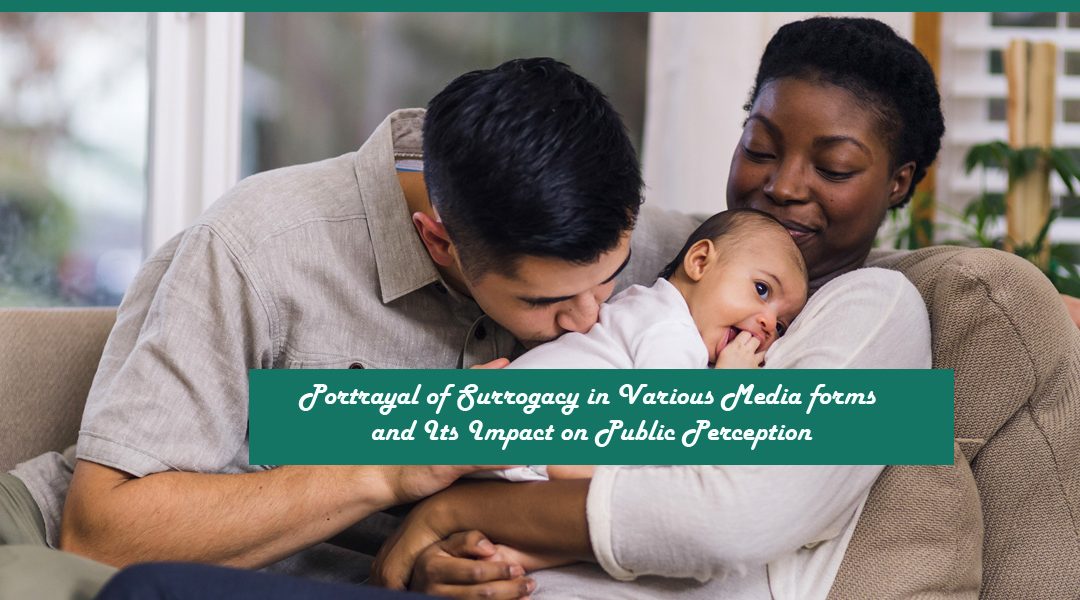Gone are the times when surrogacy used to be limited to common people seeking parenthood. With proper marketing and awareness regarding the process, the procedure has made its way into the lives of numerous celebs and other recognized people. On the other side, the depiction of surrogacy in movies, TV shows, books, and news stories altogether impacts how general people perceive it. Moreover, it forms the notion within society and responds to this complex subject. To make it clearer to understand, we will investigate how surrogacy has been portrayed in media and its effect on public perception towards it.
Portrayal of Surrogacy in Various Media Forms
Portrayal of Surrogacy in Movies and TV Shows
The world has grown leaps and bounds over the years. With this, movies and TV shows regularly depict surrogacy through sensational stories. Moreover, these stories regularly focus on emotional battles, moral problems, and now and then, sensationalized clashes. For example, within the movie “Baby Mama,” surrogacy is portrayed with a comedic touch, focusing mainly on the jumbled relationship between a surrogate and an intended mother. While this film brings humour to the subject, it also shortsightedly depicts the complexities included in surrogacy.
At the same time, a television show named “The Handmaid’s Tale” has displayed a dystopian perspective of surrogacy, depicting it as a constrained act in a traditional society. Such sensational and dull representations can essentially impact how people see this procedure. Also, regularly highlighting the potential for abuse without exhibiting the details and positive viewpoints of surrogacy will do the opposite.
Portrayal of Surrogacy in Documentaries and News Stories

Be that as it may, news media usually focus on sensational or disputable aspects of surrogacy, such as legal fights or abuse. This could lead to a skewed discernment of surrogacy, where the negative angles are more highlighted than the positive results.
Also, it sends a wrong message to the general public about how the process can turn out to be unhelpful for their concern. Hence, everyone, including the government, authorities and even the common people should reject such notions and stories.
Portrayal of surrogacy in books and literature
The portrayal of surrogacy in books and literature is more like the same as in the documentaries and the stories. That said, writing offers a different range of depictions of surrogacy. Moreover, from non-fiction books that give real information and individual accounts to fictional stories that investigate the emotional and moral complexities of surrogacy, books offer a more in-depth review of the subject. Also, they allow the readers to understand surrogacy from different points of view – that of surrogates, intended parents, and even the children born through surrogacy.
Portrayal of Surrogacy in Social Media and Blogs
The world has gone too far in terms of social media these days. Right from everything to everyone can be found on these platforms without any hassles. Also, within the digital age, social media platforms and blogs have become noteworthy in forming suppositions around surrogacy. Moreover, they offer individual stories and experiences, giving more relatable and humanized aspects of surrogacy. Through platforms like Instagram, Twitter, and individual blogs, surrogates and intended parents can share their stories, advertising surrogacy bits of knowledge about the delights and challenges of surrogacy.
Analyzing their impact on the general audience
The impact of all these platforms on the public sentiments is kind of mixed. That said, the media’s depiction of surrogacy essentially impacts how society sees this practice. Besides, dramatized and sensationalized depictions can lead to misinterpretations, regularly emphasizing the potential for emotional struggle, legal issues, or ethical problems. On the other side, this will result in a common carefulness or misconception of surrogacy, dominating the positive perspectives and the veritable requirements it fulfils for numerous families.
On the other hand, balanced and truthful depictions in documentaries, news, and literature can teach people, driving them to a more educated and compassionate understanding of surrogacy. Also, these media platforms can offer assistance to demystify surrogacy, breaking down generalizations and highlighting the common respect and agreement included in most surrogacy programs.
How impactful is the role of media in framing laws?
The role of media and other platforms in pushing for the laws and regulations is a big one. That said, media representations not only impact person recognition but also affect societal states of mind and approaches concerning surrogacy. Also, open conclusions formed by the media can push officials and influence the creation of laws and directions about surrogacy. On the other hand, in regions where surrogacy is profoundly sensationalized and depicted contrarily, stricter laws may be framed. At the same time, a more adjusted portrayal can lead to a stronger legal system.
Hence, we can say that the media plays a key role in framing the opinion of the general public regarding surrogacy. Besides, it also helps in bringing the good side and downsides in front of the common people and the governments. Still, there is a need for perfect balance in their role while bringing more reality than fiction to the portrayals of surrogacy to common people.
Final words
The portrayal of surrogacy in various platforms of media plays a key part in forming public recognition. That said, movies, TV shows, and a few news stories frequently dramatize surrogacy, driving misguided judgments and a focus on negative viewpoints. On the other hand, documentaries, books, and social media can offer a more adjusted and reasonable view. Hence, the media must portray surrogacy in a way that reflects its complexities and content, considering the noteworthy effect these depictions have on public opinion and planning.
The general public, on the other hand, should conduct their research and simply not rely on the portrayals by the media platforms. That way, they can have a better understanding of the entire process without any misconceptions.
 English
English French
French German
German Spanish
Spanish China
China



